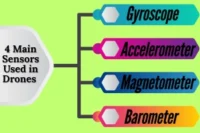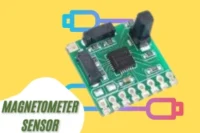Easy Drone Frame Making Tips Most Beginners Don’t Know
Published: 17 Jul 2025
Why do some drones fly like a dream while others shake and drop mid-air, even when they use the same parts? The answer often lies in the frame. That’s why knowing how to make a drone frame is so important. Many beginners skip this step, thinking it’s just a base to hold everything together. But the truth is, the frame affects everything from flight balance to battery life. Think of it like a car chassis, no matter how powerful the engine is, if the base is weak or wobbly, the ride will be rough. Should you use wood, plastic, or carbon fiber? How thick should the arms be? If you’re asking these questions, you’re not alone. Let’s break it down in a simple way so your drone flies just right.
Why the Drone Frame Matters
The frame is more than just a holder for the parts. It decides how your drone performs in the air.
Flight Stability : A strong and well-balanced frame keeps your drone steady while flying. If the frame bends or flexes, it can cause shaking, wobbling, or even crashes. A stable frame helps the drone respond better to controls and fly smoother, even in windy conditions.
Battery Life : A heavy or poorly designed frame makes the motors work harder, which drains the battery faster. When you use lightweight materials and keep the design efficient, your drone uses less power. That means longer flight times and fewer charging breaks.
Balance and Control : If the frame isn’t symmetrical or the arms aren’t cut to the same length, your drone won’t fly straight. It may tilt, drift, or feel hard to control. A balanced frame helps your drone hover better, take turns smoothly, and fly more accurately.
Choosing the Right Material
Your drone’s frame material plays a big role in its overall performance. It affects the drone’s weight, strength, flight time, and long-term durability. Choosing the right material is not just about looks, it’s about making sure your drone stays stable in the air and lasts longer with every flight.
Wood : Wood is cheap and easy to cut, especially for first-time builders. It’s great for simple test builds or learning how to shape parts. But it breaks easily and isn’t the best choice if you plan to fly high or fast.
Plastic : Plastic is very light and flexible, making it useful for small indoor drones. However, it’s not very strong. It can bend or crack if your drone crashes, so it’s not ideal for outdoor or rough flying conditions.
Aluminum : Aluminum is strong and holds up well against bumps and crashes. It’s a good pick if you need durability. But it’s heavier than other materials, which can shorten battery life and reduce flight speed.
Carbon Fiber : This is the top choice for most drone builders. Carbon fiber is lightweight, super strong, and doesn’t bend easily. It handles crashes well and helps your drone stay balanced in the air. The only downside? It can be more expensive.
What Should You Pick
For Racing Drones : Use carbon fiber. It’s strong and super light, which helps your drone fly fast and handle quick turns. Racing drones need to survive crashes, and carbon fiber does that best.
For Aerial Photography : Go with carbon fiber or aluminum. These materials keep your drone steady in the air, which is important for smooth, clear video. A little extra weight is okay as long as your drone stays balanced.
For Practice Builds or Learning : Pick wood or plastic. They are easy to cut and cheaper to replace. This makes them great for beginners who are just getting started and want to learn without spending a lot.
Arm Thickness and Frame Layout
The arms of your drone are like its bones, they hold the motors and help balance the whole frame. Getting the arm thickness and layout right makes your drone stronger, more stable, and easier to fly.
Arm Thickness
Why It Matters : The thickness of the drone arms affects how strong and stable your drone is during flight. Strong arms keep the motors in place and reduce shaking when the drone turns or hovers.
Too Thick vs. Too Thin : If the arms are too thick, they add weight and make your drone slower. If they are too thin, they can snap in a crash or bend while flying. You need a balance between strength and weight.
Beginner-Friendly Tip : For small to medium-sized drones, 4mm to 5mm thick arms are a good starting point. This gives enough strength without adding too much weight. You can always test and adjust based on your drone’s size and motor power.
Frame Layout Options
X-Frame : The most popular layout for racing drones. It has equal-length arms in an “X” shape. This design gives great balance and quick turns, which is perfect for fast, smooth flying.
H-Frame : The H-frame looks wider and gives you more space to place your flight controller, battery, and camera. It’s good for bigger builds or when you want to add extra gear.
Plus or Custom Frames : These are special or homemade designs that let you try new things. Plus-shaped frames (with one arm pointing forward) are less common but fun to experiment with if you want a unique build.
Choose What Fits Your Goal : There’s no one perfect frame layout. If you want speed, go for an X-frame. If you need space, pick an H-frame. If you’re just testing and learning, feel free to try your own design.
Step to Make Make a Drone Frame
Building a drone frame from scratch might sound hard, but it’s easier when you break it down into simple steps.
Plan Your Design
Sketch Your Layout on Paper : Start by drawing your drone’s frame on paper. This helps you see where each part will go and what shape the frame will take. Keep it simple X or H shapes work best for beginners.
Shape Meets Specs : Your frame size should match your motor and propeller size. If your motors are big, your frame needs to be wider. Leave enough room between arms so propellers don’t hit each other.
Cut and Shape the Material
Use Basic Tools: Saw, File, Drill : You don’t need fancy tools. A small hand saw, a drill, and a file are enough to cut and smooth your frame parts.
Cut Arms, Center Plate, and Supports : Measure and cut all pieces carefully. You’ll need four arms and a center plate to hold them together. If you’re using wood or plastic, cut a bit thicker for strength.
Drill Mounting Holes
Mark and Drill Holes for Motors and Screws : Use a pencil to mark where your motor holes should go. Then drill carefully to avoid cracking the material. Each arm should have two or four holes, depending on your motor type.
Make Sure Spacing Is Even on All Sides : Double-check your measurements. Uneven holes lead to misaligned motors, which can cause poor flight. Keep things balanced from side to side.
Assemble the Frame
Use Screws or Glue to Fix Arms to the Center Plat : Attach each arm to the center plate using screws or strong glue. Make sure they’re tightly held so they don’t move during flight.
Double-Check for Alignment : Place the frame on a flat surface and see if all arms touch the table evenly. If one is tilted or loose, fix it before going further.
Test for Strength and Fit
Press Gently on Joints to See if They Hold : Apply light pressure to each joint. If anything wobbles or bends, reinforce it with extra glue or screws.
Check Space for Battery, ESC, and Flight Controller : Make sure there’s enough room in the center of the frame for your electronics. They should fit snugly without being too tight or too loose.
Testing and Tuning the Frame
Before you take your drone out for a full flight, it’s important to test the frame. These small checks will help you catch problems early and keep your drone safe in the air.
Place the Frame on a Flat Surface : Start by placing your finished frame on a level table or floor. All arms should touch the surface evenly. If one arm lifts off or the frame rocks back and forth, it means something is crooked. You’ll need to adjust it before moving on.
Attach Motors and Propellers : Once the frame is stable, attach your motors and propellers. Make sure all screws are tight and the motors sit flat on the arms. Loose motors can cause noise, vibration, or even damage mid-flight.
Do a Short Hover Test : Power up the drone in a safe, open space and try a gentle takeoff. Just lift it a few inches off the ground. If it flies straight and holds its position, the frame is doing its job well.
Watch for Shaking, Tilting, or Strange Sounds : If the drone shakes, tilts to one side, or makes buzzing noises, something isn’t right. These signs usually mean there’s a problem with the frame’s balance or how tightly everything is secured.
Adjust and Reinforce as Needed : Don’t worry if it’s not perfect on the first try. You can sand down uneven arms, tighten screws, or add support with glue or zip ties. Small changes make a big difference in flight performance.
Conclusion
So, guys, in this article, we have covered how to make a drone frame in detail. I personally recommend starting with basic materials like wood or plastic if you are just getting started, they are easy to work with and perfect for learning. Once you are more confident, try building with carbon fiber for better performance. Now it’s your turn. Grab your tools, follow the steps, and build a frame that can really fly.
FAQs
Yes, you can! A small hand saw, a drill, and sandpaper are enough to get started. Just take your time and be careful when cutting and shaping parts.
No, but X and H shapes are the easiest and most stable for beginners. Custom shapes are fun but can be tricky to balance. Stick to basic shapes until you gain more experience.
You can try to repair it with glue, tape, or extra screws. If the damage is big, it’s better to replace the broken part. That way, your drone stays safe and stable in the air.
Only test indoors if you’re flying a small, lightweight drone. Make sure the room is open and clear of people or pets. For larger drones, always test outdoors in an open space.





